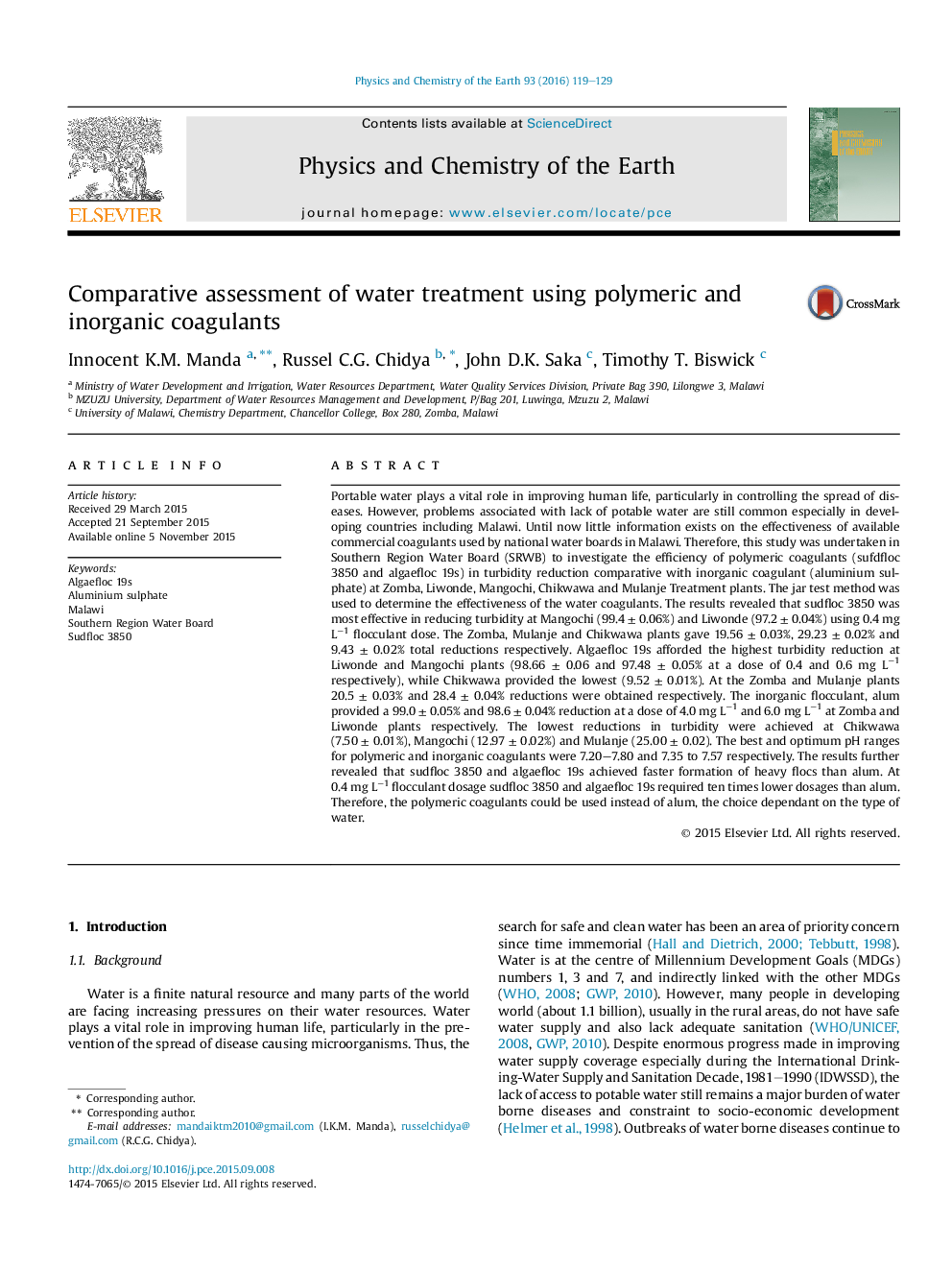| کد مقاله | کد نشریه | سال انتشار | مقاله انگلیسی | نسخه تمام متن |
|---|---|---|---|---|
| 4720809 | 1639345 | 2016 | 11 صفحه PDF | دانلود رایگان |
• We investigated efficiency of coagulants in turbidity reduction at five water treatment plants.
• Jar test method was used to determine effectiveness of water coagulants.
• Results revealed sudfloc 3850 and algaefloc 19s achieved faster formation of heavy flocs than alum.
• Polymeric coagulants could be used instead of alum, choice dependent on type of raw water.
Portable water plays a vital role in improving human life, particularly in controlling the spread of diseases. However, problems associated with lack of potable water are still common especially in developing countries including Malawi. Until now little information exists on the effectiveness of available commercial coagulants used by national water boards in Malawi. Therefore, this study was undertaken in Southern Region Water Board (SRWB) to investigate the efficiency of polymeric coagulants (sufdfloc 3850 and algaefloc 19s) in turbidity reduction comparative with inorganic coagulant (aluminium sulphate) at Zomba, Liwonde, Mangochi, Chikwawa and Mulanje Treatment plants. The jar test method was used to determine the effectiveness of the water coagulants. The results revealed that sudfloc 3850 was most effective in reducing turbidity at Mangochi (99.4 ± 0.06%) and Liwonde (97.2 ± 0.04%) using 0.4 mg L−1 flocculant dose. The Zomba, Mulanje and Chikwawa plants gave 19.56 ± 0.03%, 29.23 ± 0.02% and 9.43 ± 0.02% total reductions respectively. Algaefloc 19s afforded the highest turbidity reduction at Liwonde and Mangochi plants (98.66 ± 0.06 and 97.48 ± 0.05% at a dose of 0.4 and 0.6 mg L−1 respectively), while Chikwawa provided the lowest (9.52 ± 0.01%). At the Zomba and Mulanje plants 20.5 ± 0.03% and 28.4 ± 0.04% reductions were obtained respectively. The inorganic flocculant, alum provided a 99.0 ± 0.05% and 98.6 ± 0.04% reduction at a dose of 4.0 mg L−1 and 6.0 mg L−1 at Zomba and Liwonde plants respectively. The lowest reductions in turbidity were achieved at Chikwawa (7.50 ± 0.01%), Mangochi (12.97 ± 0.02%) and Mulanje (25.00 ± 0.02). The best and optimum pH ranges for polymeric and inorganic coagulants were 7.20–7.80 and 7.35 to 7.57 respectively. The results further revealed that sudfloc 3850 and algaefloc 19s achieved faster formation of heavy flocs than alum. At 0.4 mg L−1 flocculant dosage sudfloc 3850 and algaefloc 19s required ten times lower dosages than alum. Therefore, the polymeric coagulants could be used instead of alum, the choice dependant on the type of water.
Journal: Physics and Chemistry of the Earth, Parts A/B/C - Volume 93, June 2016, Pages 119–129
